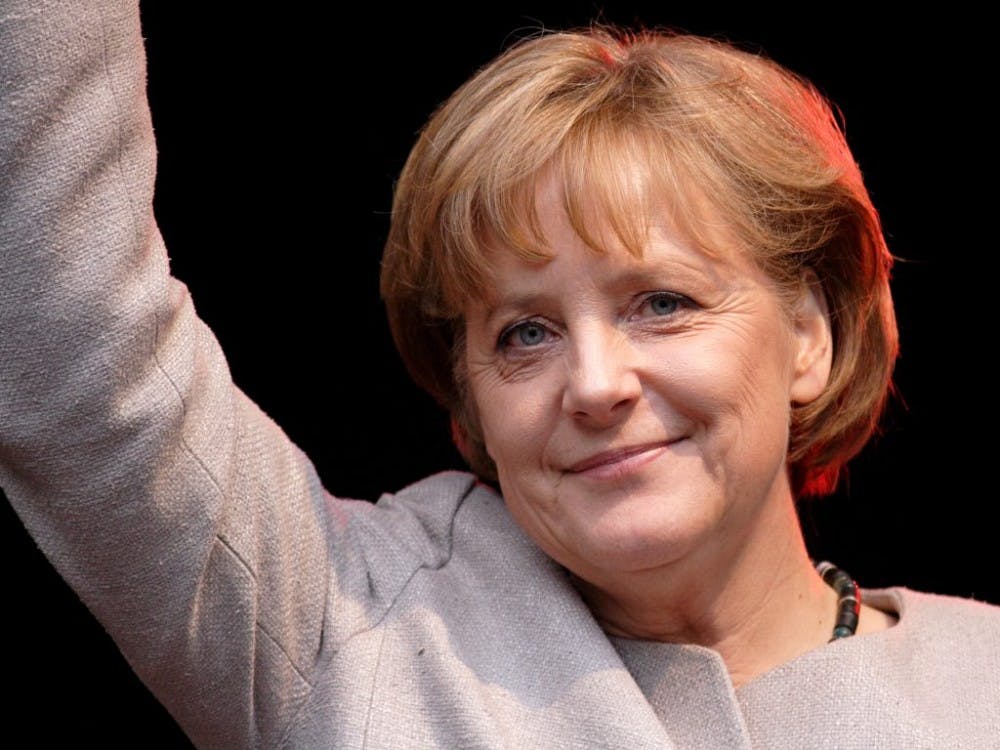Communities have been split apart and rivalries are formed purely on the basis of that one question. One family had even given up completely, creating an oversized game show-style spinner, leaving the whole decision up to chance. They admitted in defeat that this was for the gods to decide.
Then the gods responded through a little girl standing beside the spinner. “Por que no los dos!” For the non-Spanish speakers or the non-meme affiliated, her brilliant idea translates to: “Why not both!” She is immediately thrown into the air by her entire neighborhood in celebration. The whole crowd cheers as they carry her closer to where her idea came from — the skies above.
She is the hero that has brought peace to Old El Paso™ Mexico. She did the impossible and reconciled the irreconcilable. Why fight over hard and soft shell tacos when you can put them both in the same box and you decide which you want?
The debate in Europe is very much the same. Replace the tacos with Europe and keep the split communities, borders and rivalries and you have a snapshot of the existential crisis which faces the European Union. The idea of “multi-speed” Europe, however, didn’t get the same enthusiastic response.
Essentially how the idea works is that instead of every member state being forced to integrate at the same speed, member states can integrate at the pace they prefer. An example of this integration is everyone adopting the same laws and being part of the same unions, such as the 26 countries part of the Schengen area that have abolished the need for border control on their mutual borders.
Though only very weakly, this concept already applies to member states. The Schengen area excludes six EU members (Bulgaria, Croatia, Cyprus, Romania, UK and Ireland, if you were curious). While non-uniformity in terms of membership certainly already exists, there is very little freedom or flexibility to change the state of non-uniformity and change how far one is fully integrated into the EU system.
This is exactly what annoys everyone regardless of whether or not they support the current state of the EU or not. It hinders efforts to both federalize and to nationalize further.
The reason it is coming up now is because the EU is stuck in a rut. This idea is supposed to free the EU from being stuck in the middle of this tug of war and arguably meant to allow member states to grow at their own pace. If you don’t want to work with the EU’s agenda, fine. Do your own thing. It is the EU screaming in frustration to just leave it alone.
That is what makes me uncertain of how I feel about this new initiative. When people tell you to leave them alone, it isn’t for your sake but for theirs. Underneath the hums of frustration, I hear a hint of “nothing to see here,” the kind of “leave me alone” that really translates to “I don’t want a witness.”
Some countries, namely the ones already irritated with the EU, see this as legal precedence for the EU to make them second-class members. This is a serious criticism, but one should also realize that some of these countries (read: the Viségrad Four) seem to automatically hate anything the EU proposes simply because the EU proposed it.
In response to these concerns, German Chancellor Angela Merkel said, “On the Europe of different speeds, some raised concerns that this might mean that there are different classes of Europeans. I said such a difference is, in a way, is already laid down in the treaties, it is a reality.”
In her German straight honesty and realism, her response to these countries’ concern basically was: Lol, you’re already second-class member states.
And she’s totally right. But that is not to say that matters don’t stand to get worse for these member states. However, I think worrying about issues this broad and intangible is a poor way of dealing with your problems. I also think Eastern Europe has too much of an ego to think the EU’s objective is to screw them over.
Yes, that has certainly happened in the past, but please, especially you Poland, you just suck at working as part of a team. If you want your interests addressed, you figure out a way to tie into the interests of those in power. Don’t that everyone isn’t keeping you in mind, because you aren’t keeping anyone but yourself in mind.
On that note, let’s review what could be in the interests of those who come to support the multi-speed Europe: Germany, France, Italy and Spain. This new system would allow them to push integration through a lot faster. The top integration objective of these member states is, first and foremost, an EU Military. That’s the game and that’s the goal.
When you hear multi-speed Europe, hear “what can we now do that the haters are gone?” not the noise about a new Iron Curtain. But that’s not the long-game and that’s from the end goal. The end goal is likely just needing less consensus for objectives to be pushed through. Eastern Europe, if you want to not get screwed over, you better catch up or leave, because you’re right, you’re likely to get screwed over again.
It’s not because they’re out to get you. It’s because you are fighting something you can’t beat. If you can’t beat em, join em. And if you can’t join em, leave and test your luck with Russia.






